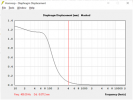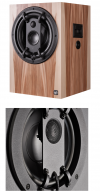- Joined
- Jan 15, 2020
- Messages
- 6,871
- Likes
- 16,826
Was it the original or Meta? I have both and use the original ones (with EQ) nowadays for my desktop system and the Meta (plus sub) for my main listening system (2 meters listening distance) as they have lower distortions (and thus play cleaner at higher levels) due to the several improvements of their drivers.Yeah, fair enough. I know the LS50 really don't do well when asked to play loud, I have heard them lol. To an extent that's why I think much of this is moot when regarding that particular speaker.
Also would like to remind of the nice test and binaural recording comparison of @mitchco of the original LS50 vs the huge JBL 4722 which was done also at 83 dB reference level

KEF LS50 (David) Versus JBL 4722 Cinema (Goliath) Speaker Comparison with Binaural Recordings
Here are two extreme opposite loudspeakers when it comes to sensitivity, size, directivity, topology and looks. Does the big speaker sound perceptually larger than the smaller speaker? Do the speakers sound the same if eq’d the same and level matched? Does the LS50 sound perceptually bigger when ...
 audiophilestyle.com
audiophilestyle.com
Possibly, but as you can see similar distortion in that region also is measured at the non-coaxial B&W 707 S2 and B&Ws are rather known for low distortion drivers.I do find it interesting that 1-2khz showed 40dB of IMD in this test. That is significantly more distortion than the THD in Amir's test. If that correlation holds at higher levels, it does imply that the IMD may become audible before the THD. Especially since the THD in that region is primarily 2nd harmonic.
Last edited:


